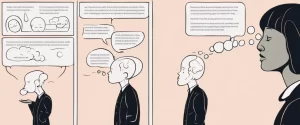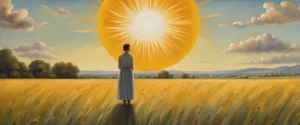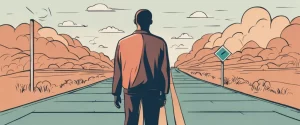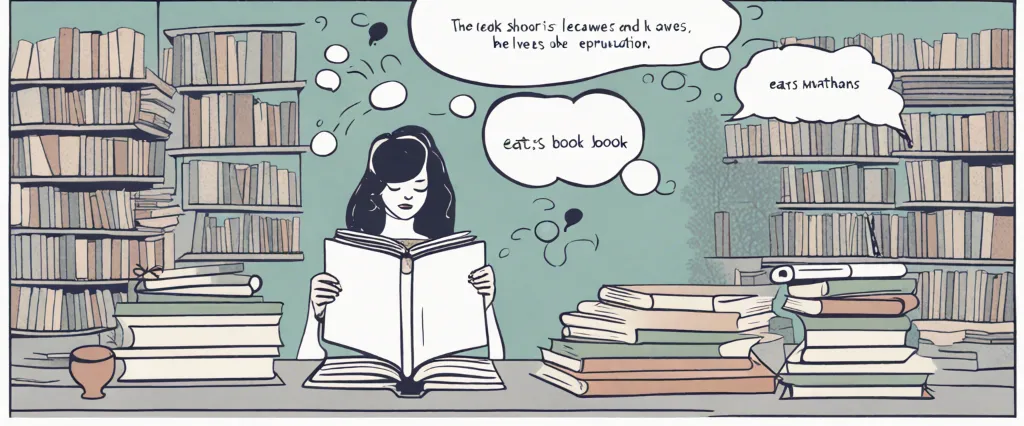
In a world where effective communication is increasingly crucial, the power of words and storytelling techniques cannot be underestimated. Two books that delve deep into the intricacies of language and narrative structure are “Eats Shoots and Leaves” by Lynne Truss and “Wired For Story” by Lisa Cron. While these two works may appear to cater to different literary tastes, they both offer valuable insights into the art of communication, exploring the impact of punctuation and the science behind captivating storytelling.
Lynne Truss’s “Eats Shoots and Leaves” strikes at the heart of our written language, focusing on the seemingly simple yet often overlooked aspect of punctuation. With her charming wit and meticulous attention to detail, Truss demonstrates how punctuation marks can drastically transform the meaning of a sentence. As we embark on this comparative study, we will explore the practical and stylistic aspects of punctuation in communication, analyzing Truss’s meticulous breakdown of various punctuation marks and her humorous anecdotes that highlight the dire consequences of punctuation misuse.
On the other hand, Lisa Cron’s “Wired For Story” takes us on a journey into the human mind. Cron reveals the science behind storytelling, revealing how our brains are innately wired to respond to certain narrative structures. Through an exploration of neurobiology and cognitive psychology, Cron delves into the psychological foundations that make a story captivating, focusing on the role of emotion, empathy, and suspense. As we delve into Cron’s work, we will examine the underlying mechanisms of storytelling that resonate with readers, dissecting her analysis of how effective storytelling can engage and captivate our minds.
Through this comparative study, we aim to elucidate the unique contributions of both “Eats Shoots and Leaves” and “Wired For Story” in enriching our understanding of communication and storytelling. While Truss brings attention to the importance of precision and accuracy in written language, Cron unveils the science behind crafting a narrative that captivates and enthralls. By examining the parallels and divergences between these two works, we will forge a deeper appreciation of the intricate relationship between the written word and the art of storytelling.
Brief Summary of Two Books
Eats Shoots and Leaves by Lynne Truss
“Eats, Shoots and Leaves” by Lynne Truss is a witty and informative book that explores the importance of punctuation in the English language. Truss takes a humorous approach to delve into various punctuation marks, such as commas, apostrophes, and semicolons, and explains their correct usage. Through examples and anecdotes, the author demonstrates how a misplaced or misused punctuation mark can alter the meaning of a sentence entirely. Truss emphasizes the need for precision and clarity in writing, arguing that the decline of proper punctuation can lead to confusion and miscommunication. However, rather than being a strict grammar guide, the book celebrates the quirks and rules of punctuation, making it an entertaining and enlightening read for language enthusiasts and anyone interested in improving their writing skills.
Wired For Story by Lisa Cron
Wired for Story” by Lisa Cron explores the science behind storytelling and how understanding the brain’s natural response to stories can enhance our own writing and storytelling abilities. The book delves into the relationship between storytelling and the brain, highlighting how stories tap into our primal instincts and how the brain craves a certain structure and emotional engagement.
Cron emphasizes the importance of understanding the brain’s decision-making process and how it affects the way readers engage with a story. She introduces the concept of the protagonist’s “want” and “need,” explaining how aligning the reader’s desires with the character’s desires is crucial for a compelling story. Additionally, the book explores the role of conflict and tension in storytelling, and how these elements help captivate a reader’s attention.
Throughout the book, Cron provides practical advice and exercises for writers to implement the principles of neuroscience in their storytelling. She also emphasizes the importance of understanding your target audience and considering their emotional needs and desires while crafting a narrative.
Overall, “Wired for Story” aims to help writers create engaging and emotionally resonant stories by leveraging the innate brain functions that make storytelling so powerful. By understanding the science behind storytelling, writers can create narratives that capture readers’ attention, trigger emotions, and leave a lasting impact.
Comparison between Two Books
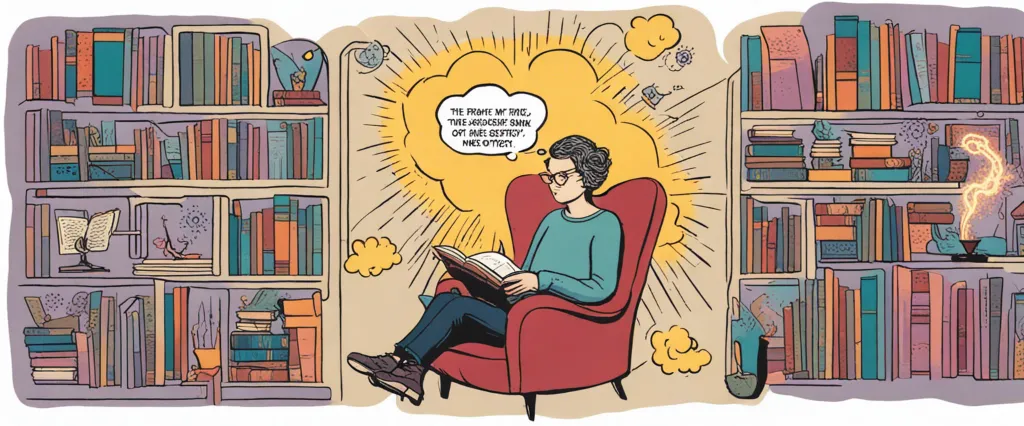
Similarities in Writing
Both Eats Shoots and Leaves by Lynne Truss and Wired For Story by Lisa Cron focus on the art of writing and share several similarities:
1. Emphasis on strong grammar and punctuation: Eats Shoots and Leaves centers around the importance of correct punctuation for clear communication, while Wired For Story stresses the significance of proper sentence structure and grammar to craft compelling narratives.
2. Attention to detail: Both books emphasize the significance of paying attention to every single word and punctuation mark used in writing. Truss argues that even the smallest punctuation mark can drastically change the meaning of a sentence, while Cron emphasizes the impact of word choices on the reader’s experience.
3. Clear and concise language: Truss and Cron both advocate for writing that is precise and concise. Truss constantly encourages writers to trim unnecessary words and be mindful of brevity, while Cron emphasizes the importance of writing that engages the reader by being clear and direct.
4. Understanding storytelling techniques: Wired For Story delves into the science behind storytelling and highlights the importance of structure, character development, and emotional resonance in crafting a compelling narrative. This intersects with Eats Shoots and Leaves as Truss often uses examples from literature to illustrate her points on punctuation, demonstrating how punctuation choices can affect the storytelling process.
5. Reader engagement: Both authors stress the importance of engaging the reader. Truss argues that correct punctuation allows the reader to focus on the content and meaning of the text without being distracted, while Cron emphasizes the ways in which understanding story structure and engaging the reader’s emotions can create a more immersive and satisfying reading experience.
Overall, Eats Shoots and Leaves and Wired For Story share a common goal of helping writers improve their craft by focusing on the nuances of language, structure, and reader engagement.
Divergences in Writing
Eats Shoots and Leaves by Lynne Truss and Wired For Story by Lisa Cron are both books that delve into the intricacies of writing, but they approach the subject from different perspectives. While Truss focuses on grammar and punctuation in Eats Shoots and Leaves, Cron explores the art of storytelling in Wired For Story.
Truss’s book is a witty and humorous guide to punctuation. She highlights the importance of proper grammar and how it can drastically alter the meaning of a sentence. Truss emphasizes the significance of punctuation rules and provides numerous examples of common errors. Her book aims to educate readers on the correct usage and placement of commas, apostrophes, and other punctuation marks. It is an invaluable resource for those seeking to improve their writing through precise grammar.
On the other hand, Cron’s Wired For Story takes a more creative and narrative-focused approach. She delves deep into the realms of storytelling and explores how neuroscience can help craft engaging narratives. Cron looks at the brain’s response to stories, revealing why certain plot structures, character arcs, and emotional arcs work so effectively. By combining science with storytelling techniques, Wired For Story aims to assist writers in creating more impactful and memorable narratives.
The main divergence between the two books lies in their focus. Truss’s Eats Shoots and Leaves concentrates on the technical aspects of writing, providing a comprehensive guide to punctuation. Its primary goal is to improve grammar and punctuation skills. On the other hand, Cron’s Wired For Story shifts the focus to the art of storytelling itself. She delves into the psychological and emotional aspects of storytelling, aiming to help writers create more resonant and compelling narratives.
Both books cater to different needs and preferences. Eats Shoots and Leaves is ideal for those who want to polish their writing by mastering grammar and punctuation. It offers practical advice and guidelines to ensure correct usage. Meanwhile, Wired For Story is more suited for individuals seeking to enhance their storytelling abilities and create powerful narratives that captivate readers. It provides insights into the science of storytelling, unlocking the potential behind crafting gripping tales.
In conclusion, while Eats Shoots and Leaves and Wired For Story both explore the realm of writing, they approach the subject differently. Truss’s book focuses on the technicalities of grammar and punctuation, serving as a practical guide to improve writing skills. Cron, on the other hand, dives into the art of storytelling and explores how to create impactful narratives by combining neuroscience with storytelling techniques.
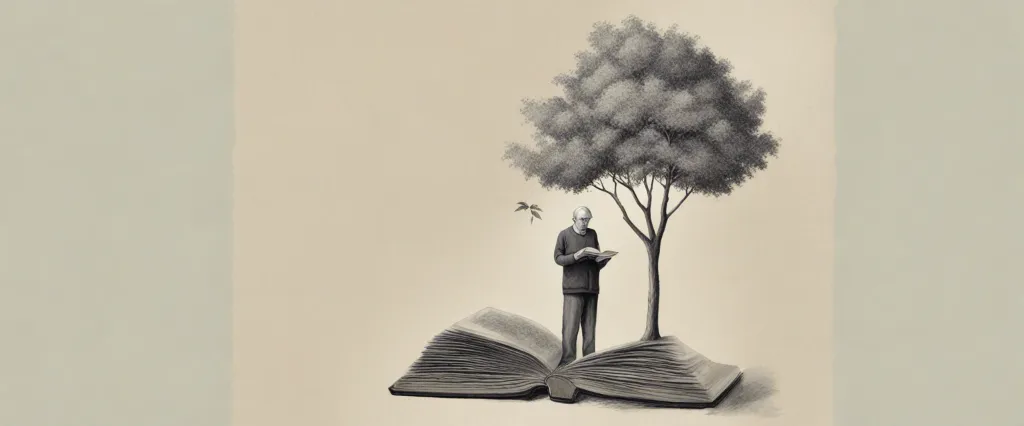
Conclusion
Both books, “Eats Shoots and Leaves” by Lynne Truss and “Wired For Story” by Lisa Cron, offer valuable insights and skills in their respective genres. The choice of which book is more worthy of reading depends on an individual’s interests and needs.
“Eats Shoots and Leaves” is a punctuation guide that delves into the importance of correct punctuation in writing. It provides a lighthearted and entertaining take on grammar, making it a good choice for those who enjoy learning about language and its usage. Truss emphasizes the significance of proper punctuation in conveying meaning and avoiding misinterpretation.
On the other hand, “Wired For Story” by Lisa Cron focuses on the principles of storytelling by exploring how the human brain responds to narratives. It delves into the psychology of storytelling and provides practical advice to enhance one’s storytelling abilities. This book is ideal for writers or individuals interested in understanding the underlying mechanisms that make a story engaging and effective.
Ultimately, the choice depends on your personal interests and goals. If you are passionate about language, grammar, and punctuation, “Eats Shoots and Leaves” would be a more fitting choice. Conversely, if you are interested in improving your storytelling skills and understanding the science behind captivating narratives, “Wired For Story” is the better option. Both books offer valuable knowledge, so consider which topic aligns more with your interests and needs.
